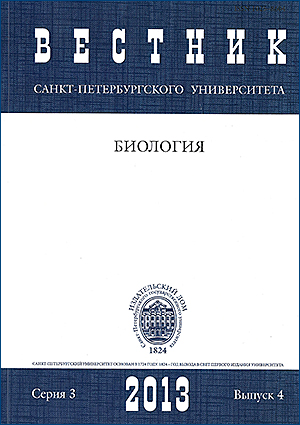Imbalance of neuromediatory systems in rat brain structures under treatment of neuroleptic and possible protective role of peptide tafcine
Abstract
The purpose of the work is to study dopamine- and serotoninergic systems after prolonged treatment of neuroleptic (haloperidol) and investigate possible protective role of tafcine peptide (Tyr-Lys-Pro-Arg). The activity of monoamine oxidases (MAO A and MAO B), content of dopamine, serotonin and products of these neuromediators metabolites are determined in sensorimotor zone of rat brain cortex and in nucleus caudatum. Prolonged treatment of Wistar mail rats with haloperidol (0,5 mg/kg daily, during 30 days, i/p) causes an increase of MAO A activity, but a decrease of MAO B activity, especially in nucleus caudatum in comparison with brain cortex. A single injection of tetrapeptide tafcine (Tyr-Lys-Pro-Arg, 0,5 mg/kg, i/p, 1 hour ) to rats after 30-days treatment with haloperidol resultes in some protective effect on all investigated parameters (activity of MAO A and B, as well as the content of dopamine, serotonin and their metabolites). Refs 30. Tables 2.
Keywords:
tetrapeptide tafcine (Tyr-Lys-Pro-Arg), dopamine, serotonin, monoamine oxidase A and B, sensorimotor zone of rat brain cortex, nucleus caudatum
Downloads
Downloads
Published
How to Cite
Issue
Section
License
Articles of Biological Communications are open access distributed under the terms of the License Agreement with Saint Petersburg State University, which permits to the authors unrestricted distribution and self-archiving free of charge.





